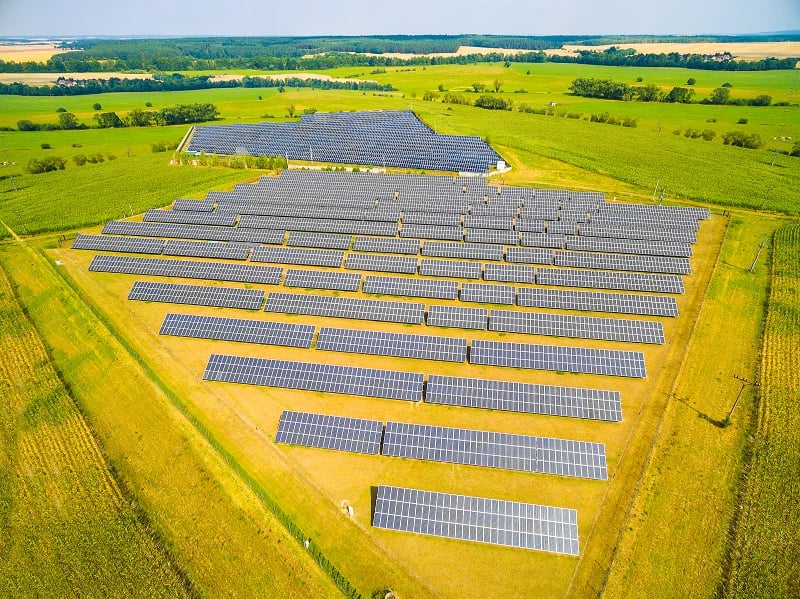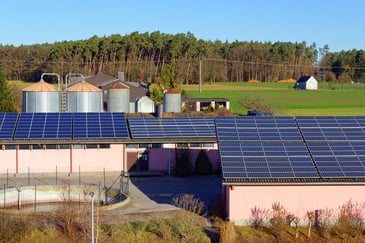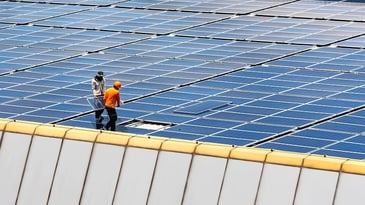Solar Dominance Can Solve the Climate Crisis By 2030

Depressed about climate change? Here is some remarkable news. General Electric, once a fossil fuel and nuclear powerhouse, is shuttering a perfectly good gas power plant in California because it can no longer compete with renewable energy. And GE is teaming with the financial giant Blackrock to create a business deploying distributed solar and battery storage systems on houses and businesses. The solar revolution is here and one of the most prominent sustainable development examples.
How fast can solar go? Watch this fascinating video by Stanford lecturer and Silicon Valley entrepreneur Tony Seba. He makes the case that for fundamental economic reasons, the world’s power and transport systems will be 100% renewable by 2030, or close to it. The energy side of the climate crisis? Solved in the next ten years.
While Seba’s timetable may seem optimistic, energy market analysts increasingly see solar (plus storage, plus electric vehicles) as the backbone of an emerging global energy system. Within our lifetimes, we will see the transition to 100% renewable energy, with ubiquitous cheap solar and cheap storage at the core of the system. But is Tony right? Could this really happen fast enough to get us on a path to stabilize the climate within the next decade?
In a new paper, we explore what we call the Solar Dominance hypothesis: the idea that by 2030, at least half of global electric power will be coming from solar plus storage (Tony says all power will be renewable by then, but let’s be conservative).
The inevitability of Solar Dominance stems from powerful technology trends that have either been overlooked or ignored. Since 2000, solar capacity has been doubling every two or three years, and costs for installed distributed and utility-scale solar have declined about 10% per year. As a consequence, utility-scale solar is now below or near grid parity everywhere. And distributed solar is fast approaching parity in many major markets around the world. Similar cost reductions and growth in installed capacity have occurred with lithium ion batteries.
If you simply run these growth trends out for another decade, the math gets you to Solar Dominance—50% of global power from solar and storage—by about 2030.
Will the trends continue? The way this works is that, starting now, utility-scale solar (plus wind and storage) will account for almost all new growth in electric generation. This dynamic has been seen in recent bids, for example, in Colorado, Idaho, and California. But the real disruption begins in a year or two, as unsubsidized, distributed (residential, commercial, industrial, and community) solar plus batteries start to beat grid prices in an increasing number of markets—and by a margin that quickly will be getting ever larger. This is the market play that GE and Blackrock are making.
Solar Dominance means that during the 2020s anyone and everyone with access to capital will start generating their own power. Customers will defect
significantly or fully from the grid, because it will be so much cheaper to self-generate with storage then to purchase grid power for many months of the year.
This is already playing out in South Australia and in Queensland, where rooftop solar penetration is over 25%, and up to 2/3 of power needs are generated with solar alone. On the battery side, storage as a service is already here, stranding peaking plants in several US markets. A recent study found it was already cost effective for 5 million American businesses to install batteries to avoid peak pricing.
Of course, there are many obstacles to the growth of solar plus storage at the dizzying speed needed for Solar Dominance by 2030. Will raw material and labor markets keep up? Could threatened utilities and local zoning opposition slow the growth of distributed solar and storage? And can wind and storage provide enough energy when the sun doesn’t shine?
These are threats. But the relentless underlying logic is this: assuming that the trends of 10% annual cost reductions continue, by the mid 2020’s the world will have access to very cheap solar and very cheap storage. Green New Deal policies to train workers, remove policy barriers, and support a just transition will further help overcome any obstacles. This in turn will drive the “mother of all energy disruptions”, regardless of attempts to slow it down.
To think about Solar Dominance is to imagine yourself in 2007, the year that the smart-phone first hit the market. What percentage of the global population would you have then predicted would own a smart-phone within a decade? Conventional thinking would never get to the answer of 2.5 billion phones, owned by a third of the globe’s population. Similarly, plummeting cost trends for solar and storage have been powerful and obvious. Yet today’s conventional thinking has missed the disruptive impact on global energy markets that cheap and cheaper solar and storage will have in the 2020’s.
Solar Dominance is coming. Will it be fast enough to solve the climate crisis? We need to make sure that it is. Given the stakes, relying on market forces and sustainable development initiatives alone is not the right bet. Now is the time to use markets coupled with citizen action to accelerate the transition. If Tony turns out to be wrong on the 2030 date for solar dominance, let’s make sure it’s not by much.





